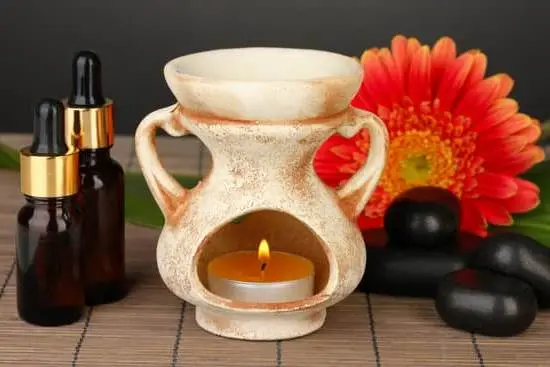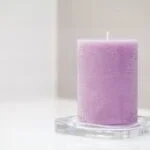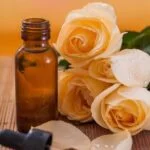Are you wondering how to figure sale price of aromatherapy products? Aromatherapy has gained popularity for its potential health benefits and therapeutic uses. In this article, we will explore the world of aromatherapy, its benefits, and popular uses. We will also delve into the factors to consider when setting the sale price of aromatherapy products, and provide strategies for optimizing the sale price for a successful aromatherapy business.
Aromatherapy is a holistic healing treatment that uses natural plant extracts to promote health and well-being. It has been used for centuries in various cultures for its medicinal and therapeutic benefits. From reducing stress and anxiety to relieving pain and improving sleep quality, aromatherapy offers a wide range of benefits. Its popularity has led to a booming market for aromatherapy products, including essential oils, diffusers, candles, and bath products.
When it comes to selling aromatherapy products, understanding the cost and value is crucial. Factors such as quality of ingredients, production methods, and brand reputation all play a role in determining the pricing strategy.
In the following sections of this article, we will discuss how to analyze the competition and demand in the market, calculate production and overhead costs, determine profit margins, and implement discounting strategies to drive sales. By understanding these factors and following effective strategies, you can successfully set the sale price of your aromatherapy products.
Understanding the Cost and Value of Aromatherapy Products
Aromatherapy products have gained popularity due to their potential health benefits and therapeutic uses. Before setting the sale price of these products, it is crucial to understand their cost and value. By taking into consideration various factors, such as production costs, market demand, and desired profit margin, you can determine a competitive yet profitable sale price for your aromatherapy products.
Production Costs
When figuring out the sale price of aromatherapy products, it is essential to calculate the total production costs. This includes expenses such as raw materials, packaging, labeling, and labor. By accurately assessing these costs, you can ensure that your sale price covers all expenses while still allowing for a reasonable profit margin.
Market Demand and Competition
Another important factor to consider when understanding the cost and value of aromatherapy products is the market demand and competition. Researching similar products in the market can provide valuable insights into what consumers are willing to pay for such items. Analyzing the competition can also help in positioning your products at a competitive yet attractive price point.
Perceived Value
In addition to production costs and market demand, it is crucial to assess the perceived value of your aromatherapy products. Factors such as product quality, uniqueness, and brand reputation can play a significant role in determining the value that customers place on your products. Understanding this perceived value can assist in setting a sale price that reflects both the cost of production and the overall worth of your aromatherapy offerings.
By carefully considering these factors when assessing the cost and value of your aromatherapy products, you will be better equipped to determine an appropriate sale price that aligns with consumer expectations and business objectives.
Factors to Consider When Setting the Sale Price of Aromatherapy Products
When setting the sale price of aromatherapy products, there are several factors to consider in order to ensure a balance between covering costs and enticing customers with a competitive price. Here are some key factors to take into account:
- Cost of Ingredients: Consider the cost of the essential oils, carrier oils, and other ingredients used in the production of aromatherapy products.
- Packaging and Labeling: Factor in the cost of packaging materials, labels, and any additional packaging design or branding expenses.
- Labor Costs: Calculate the labor costs involved in manufacturing, bottling, labeling, and packaging the aromatherapy products.
- Overhead Expenses: Include fixed costs such as rent for production space, utilities, insurance, and other overhead expenses.
In addition to accounting for the production costs of aromatherapy products, it is important to determine a desired profit margin that aligns with your business goals. This involves analyzing the market demand and competition to find an optimal pricing strategy. Here are some steps on how to figure sale price of aromatherapy products:
- Research Competitor Pricing: Study the pricing strategies of competitors to understand the range of prices for similar aromatherapy products in the market.
- Analyze Market Demand: Evaluate the demand for aromatherapy products within your target market and assess how price sensitivity may impact sales volume.
- Determine Profit Margin: Decide on a suitable profit margin that reflects the value of your aromatherapy products while remaining attractive to customers.
By carefully considering these factors and conducting thorough market research, businesses can effectively set a sale price for their aromatherapy products that not only covers costs but also appeals to customers and drives sales. Understanding these considerations is crucial in achieving success in selling aromatherapy products.
Researching the Market
When it comes to figuring out the sale price of aromatherapy products, one of the key steps is to research the market and analyze the competition and demand. This step is crucial in understanding what other similar products are being offered at, as well as what customers are willing to pay for these products. By gaining insights into the market, you can make informed decisions about pricing your aromatherapy products competitively while still maintaining profitability.
To effectively research the market, there are several factors to consider and steps to take:
- Identify your competitors: Start by identifying who else is offering similar aromatherapy products. Look at both direct competitors (those offering similar products) and indirect competitors (those offering alternative solutions for the same need).
- Analyze their pricing strategy: Once you have identified your competitors, analyze their pricing strategies. Consider factors such as their base prices, any discounts or promotions they offer, and whether they position themselves as a premium or budget brand.
- Evaluate customer demand: To understand customer demand, look at consumer behavior data, customer reviews, and any available market research on aromatherapy products. Determine which types of products are most popular and what price points customers are most comfortable with.
By conducting a thorough analysis of the competition and demand for aromatherapy products in the market, you can gain valuable insights that will inform your own pricing strategy. This information will help you set a sale price that is competitive yet appealing to potential customers.
Whether you are just starting or already running an aromatherapy business, researching the market is an ongoing process that will help you stay informed about changes in customer preferences and competitor offerings. This continuous analysis will enable you to adjust your sale prices accordingly to remain competitive in today’s dynamic market environment. By regularly assessing these factors, you can ensure that your pricing remains optimal for the success of your aromatherapy business.
Calculating the Total Production and Overhead Costs
When figuring the sale price of aromatherapy products, it is crucial to accurately calculate the total production and overhead costs. This step is essential in ensuring that the sale price covers all expenses and leaves room for profit.
Breaking Down Production Costs
The first step in calculating the total production cost is to break down all expenses related to manufacturing aromatherapy products. This includes the cost of raw materials, labor, packaging, labeling, and any other direct costs associated with producing the items. It’s important to track every penny spent on production to get an accurate figure.
Accounting for Overhead Costs
In addition to production costs, overhead expenses must also be accounted for when determining the sale price of aromatherapy products. Overhead costs include rent, utilities, insurance, marketing, administrative salaries, and any other indirect expenses required to keep the business operational. These costs need to be factored into the sale price to ensure that they are covered as well.
Using a Formula for Cost Calculation
Many businesses use a formula to calculate the total production and overhead costs per unit of product. By dividing the total production and overhead expenses by the number of units produced, you can determine how much it costs to make each item. This figure then becomes part of the overall equation for setting a profitable sale price that covers all costs while still being competitive in the market.
Determining the Desired Profit Margin for Aromatherapy Products
One of the most crucial steps in figuring out the sale price of aromatherapy products is determining the desired profit margin. This is the amount of profit that a business aims to make from each sale, and it plays a significant role in setting the final price for your products. To calculate the profit margin, you’ll need to consider factors such as the cost of production, overhead expenses, and the perceived value of your products in the market.
To determine your desired profit margin for aromatherapy products, start by calculating your total costs. This includes the cost of raw materials, packaging, labor, and any other expenses incurred during production. Once you have a clear picture of your costs, you can then decide on what percentage of profit you want to make from each sale. For many businesses, a 50% profit margin is a common target, but this can vary depending on the industry and competition.
After crunching the numbers and determining your desired profit margin, it’s important to keep in mind that this figure should also align with the perceived value of your aromatherapy products in the market. Conducting market research and understanding consumer demand will help you gauge what customers are willing to pay for your products. It’s essential to strike a balance between achieving your desired profit margin and pricing your products competitively in order to attract customers.
To successfully determine the desired profit margin for aromatherapy products, it’s crucial to keep an eye on industry trends and constantly reassess your pricing strategy based on market changes. By staying nimble and adaptable, you can optimize your sales while ensuring that your business remains profitable in the long run.
| Determining Profit Margin | Steps |
|---|---|
| Calculate total costs including raw materials, packaging, and labor | 1 |
| Decide on desired percentage of profit | 2 |
| Conduct market research to understand customer demand | 3 |
Strategies for Discounting and Promotions to Drive Sales
When it comes to driving sales for aromatherapy products, offering discounts and promotions can be a highly effective strategy. These tactics not only attract new customers but also encourage repeat purchases from existing ones. There are various ways to implement discounting and promotion strategies to boost sales of aromatherapy products.
One effective strategy is to offer discounts for bulk purchases. Customers are often more inclined to buy in larger quantities if they believe they are getting a better deal. For example, offering a “Buy One, Get One 50% Off” promotion can entice customers to purchase more items at once. Another option is to provide tiered discounts based on the total amount spent, such as 10% off for purchases over $50 and 20% off for purchases over $100.
In addition to bulk discounts, running promotions on specific products can also drive sales. For example, offering a limited-time discount on popular essential oils or diffusers can create a sense of urgency and incentivize customers to make a purchase. Promotions like “Flash Sales,” where products are discounted for a short period of time, can create excitement and drive immediate sales.
Another way to drive sales through discounts and promotions is by offering incentives for referrals or loyalty programs. By rewarding customers for referring their friends or for making repeat purchases, you can increase customer retention and attract new business at the same time.
Implementing these discounting and promotion strategies requires careful consideration of profit margins and overall pricing strategies. It’s important to calculate how these promotions will impact the sale price of aromatherapy products while still maintaining profitability.
| Strategy | Description |
|---|---|
| Bulk Purchases Discounts | Offering discounts for buying multiple items at once |
| Product-specific Promotions | Running limited-time discounts on popular products or through flash sales |
| Referral and Loyalty Incentives | Rewarding customers for referrals or repeat purchases |
Finalizing the Sale Price and Monitoring Its Effectiveness
When finalizing the sale price of aromatherapy products, it is important to consider various factors to ensure that the price is both competitive and profitable. One key factor to consider is the total production and overhead costs. This includes all expenses related to producing and packaging the aromatherapy products, as well as any fixed costs such as rent, utilities, and salaries. By calculating these expenses, you can determine the minimum sale price needed to cover costs and make a profit.
Another essential consideration when determining the sale price of aromatherapy products is the desired profit margin. This involves deciding on the amount of profit that you want to make from each product sold. It’s important to strike a balance between setting a competitive price that will attract customers while still making a reasonable profit.
After finalizing the sale price, it’s crucial to monitor its effectiveness in driving sales and generating revenue. One way to do this is by tracking sales data and customer feedback to assess whether the current pricing strategy is successful.
If sales are not meeting expectations, it may be necessary to reevaluate the sale price and consider implementing discounting or promotional strategies. By closely monitoring the effectiveness of the sale price, you can make adjustments as needed to optimize your pricing strategy for successful aromatherapy business.
Overall, finalizing the sale price of aromatherapy products requires careful consideration of production costs, desired profit margins, and ongoing monitoring of effectiveness. By taking these factors into account, you can set a competitive yet profitable sale price that will help drive sales and contribute to the success of your aromatherapy business.
Conclusion
In conclusion, setting the sale price of aromatherapy products is a crucial aspect of running a successful business in this industry. By understanding the cost and value of your products, researching the market, and considering factors such as production costs and desired profit margins, you can effectively determine the sale price that will attract customers while also ensuring profitability for your business. Additionally, utilizing strategies for discounting and promotions can help drive sales and increase brand visibility.
One important factor to consider when figuring out the sale price of aromatherapy products is to conduct thorough research on the market, including analyzing the competition and demand for similar products. This will provide valuable insights into pricing trends and consumer preferences, allowing you to position your products competitively.
It is essential to regularly monitor the effectiveness of your chosen sale price to ensure that it continues to align with market conditions and business goals. By consistently evaluating customer feedback, sales data, and industry trends, you can make informed adjustments to optimize your pricing strategy for long-term success. With these considerations in mind, you can confidently establish a sale price that resonates with customers while also supporting the growth and profitability of your aromatherapy business.

Are you looking for a natural way to improve your health and wellbeing?
If so, aromatherapy may be the answer for you.





